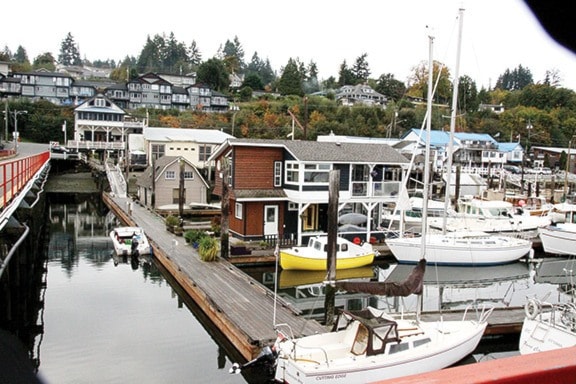Labour Day weekend, 1926, was to have been a joyous one for Cowichan Valley residents and the hundreds of Royal Navy officers and seamen whose flagship had anchored in Cowichan Bay. There, on Monday afternoon, “with Mt. Tzouhalem as an effective background, [HMS Despatch] made an impressive picture as she swung with the tide”.
Hardly had the first of her crew set foot in the village, however, than their shore leave was plunged into tragedy when two seamen were injured, one critically.
It happened in a matter of seconds. Who could have seen it coming?
The Gray Line bus driver? No, he’d soon swear before a coroner’s jury aboard the Despatch and in Duncan that he’d had no warning that the Victoria-Duncan stage would lose its brakes at the top of Buena Vista Hill (the deep and curving descent of Cowichan Bay Road at the southern entrance to the village), lose control and barrel into a group of sightseeing sailors.
It was, in fact, acknowledged that driver William H. Landy, Victoria, had performed well in bringing the runaway bus to a stop as quickly as he did without causing further injuries. Among those so blessed was Vice-Admiral Sir Cyril Fuller, commander-in-chief of the Pacific Fleet, whose staff car “missed being caught by only about a minute”.
The same, alas, couldn’t be said for electrical artificer William Errald Richards, who died in King’s Daughters Hospital, Duncan, at 3 o’clock the next morning.
Just 29 and a veteran of the First World War, he left a wife and seven-year-old son. Among those who attended his funeral in Esquimalt’s naval cemetery were members of the Royal Canadian Legion, Duncan, and 50 wreaths demonstrated the collective grief of his shipmates and Island service groups and individuals for this hapless British sailor.
Ironically, Richards’s shipmates said that they’d heard a horn honking loudly and repeatedly but took it to be part of their welcome — until the bus rammed into them as they streamed onto the roadway from the government wharf.
Only one seaman, amazingly, was actually struck by the bus, the impact throwing him against Williams who was “catapulted” under the wheel of a parked school bus. Initially, his injuries weren’t considered to be life threatening but this proved to not be the case.
Some were quick to point out that four Gray Line coaches had passed through Cowichan Bay that afternoon, all of them, but for the wayward bus, said to be new.
With the Despatch’s departure, the coroner’s inquest was resumed in the Duncan court house before a six-man jury, Dr. H.P. Swan presiding. Driver Landry described how he’d tried his brakes as he approached the top of Buena Vista Hill, found them to be satisfactory, and so began the winding descent — only to have the bus begin to pick up speed. When feverishly pumping the brakes had no effect he shifted into second gear then tried to go into low gear, but stalled the engine. A driver for nine years, this was his first time at the wheel of a bus in this locale, he added; a 30-seater that was six years old, cobbled together from various truck components, and used by the company only as a “spare.”
James Marsh testified that he’d driven the bus previously and “never thought the brakes were good but had had no trouble”.
Duncan mechanic Percy Koltermann described the brake drums as being badly scored, the linings glazed and hard. In fact, only one rear brake was really effective. In a test run down Buena Vista Hill he and Const. Hughes were unable to keep it below 10 mph or to bring it to a stop before reaching Ordano’s store (today’s Masthead Restaurant) where the accident occurred. During a second test run they gained so much speed that he was unable to drop into low gear.
The jury, composed of Cowichan Bay residents, came back with several recommendations. Firstly, they attached no blame to driver Landry who, they thought, “deserves great credit for his conduct in very trying circumstances”.
Secondly, they blamed the accident on a passenger-bearing “conveyance which was not at the time in a fit condition for such a purpose”. Thirdly, they served notice to the provincial government of “the very urgent necessity of at once widening and straightening the Island Highway where it passes through Cowichan Bay”.
Fourthly, they suggested that the government appoint travelling safety inspectors “with authority to compel [bus] drivers, during journeys, to demonstrate that their brakes [are] in working order, failing which they should have the power to order the stage to be taken off the road at once, and not allowed to be used again, until certified by such inspector to be in satisfactory working order, each district to have at least one inspector.”
www.twpaterson.com
